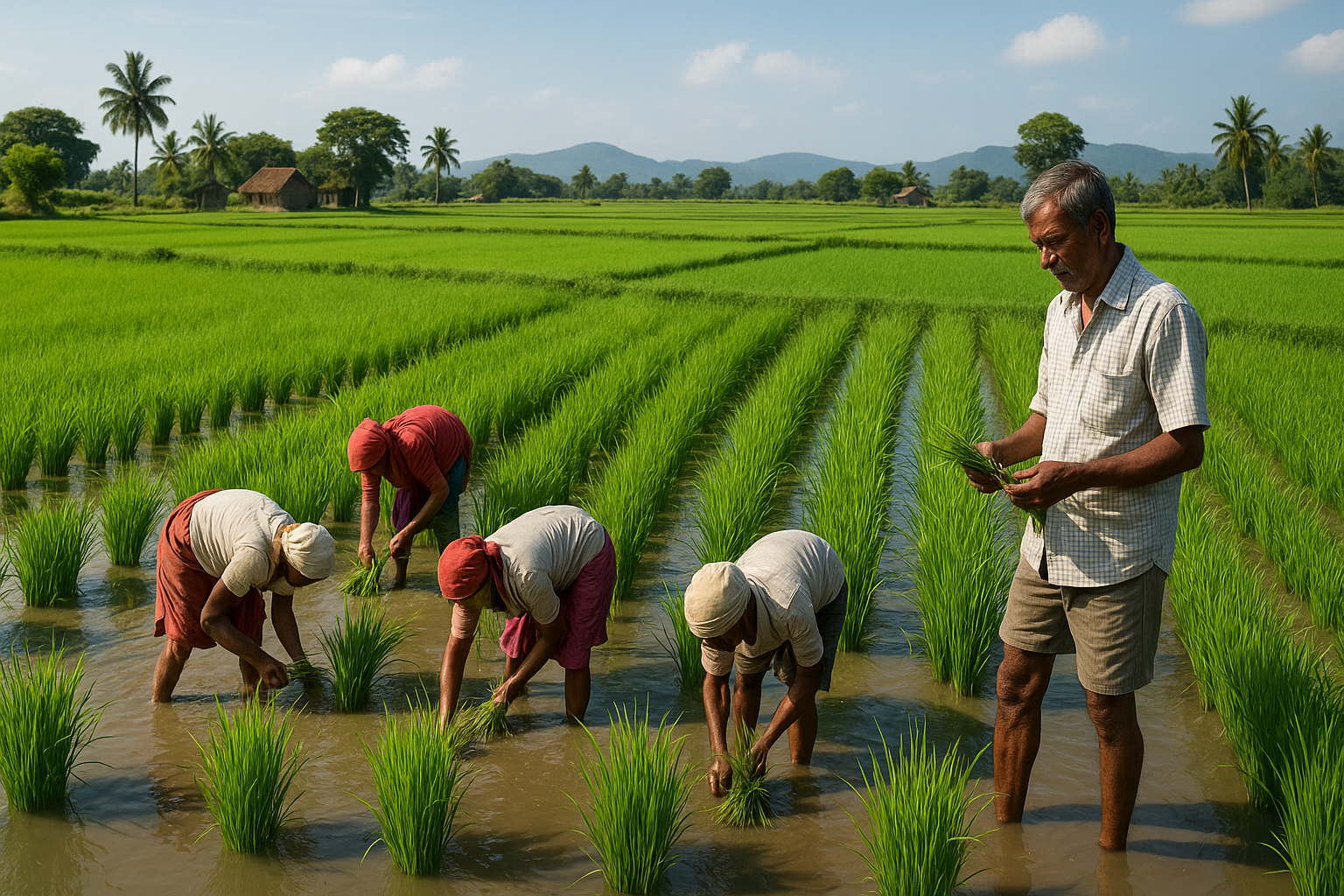
Rice is a staple food for billions, and India is one of the world’s largest producers and exporters of both organic and conventional rice. But when sourcing rice from India, should you choose organic or regular rice? The answer depends on factors like health benefits, environmental impact, cost, and market demand.
Organic rice is grown without synthetic pesticides or fertilizers, making it a cleaner, more sustainable choice. Regular rice, on the other hand, is more affordable and widely available. For rice exporters and manufacturers, understanding these differences can help them make informed sourcing decisions.
In this blog, we’ll compare organic and regular rice in terms of nutrition, safety, taste, and sourcing advantages from India.
1. Nutritional Showdown: Is Organic Rice Healthier?
Many believe organic rice is more nutritious, but research shows mixed results. A study published in the British Journal of Nutrition (2014) found that organic crops have higher antioxidant levels and lower pesticide residues. However, the macronutrient (carbohydrates, proteins) content remains similar in both types.
Key Differences:
- Organic rice may have slightly higher levels of certain antioxidants and minerals due to natural farming practices.
- Regular rice is often fortified with nutrients like iron and folic acid in some markets.
For rice supplier companies, this means organic rice can be marketed as a premium, health-conscious product, while regular rice remains a cost-effective bulk option.
2. Pesticides & Chemicals: What’s Really in Your Rice?
The pesticide issue represents the most significant difference between organic and conventional rice. Data from India’s Agricultural and Processed Food Products Export Development Authority (APEDA) reveals:
Regular rice may contain:
• Chlorpyrifos (banned in many countries)
• Synthetic nitrogen fertilizers
• Glyphosate residues (in non-basmati varieties)
• Artificial ripening agents
Organic rice certification (India Organic/ USDA) guarantees:
✓ Zero synthetic pesticides
✓ Only approved natural pest control (neem oil, biopesticides)
✓ Annual soil and water testing
✓ Complete traceability from farm to export
For rice supplier companies, this means:
- Organic meets strict EU/US import standards automatically
- Regular rice requires additional residue testing for export
- 30% of global buyers now mandate pesticide-free certification
A 2023 Food Safety and Standards Authority of India (FSSAI) study found that 12% of conventional rice samples exceeded maximum residue limits (MRLs), while organic samples showed no violations. This makes organic rice the safer choice for:
- Baby food manufacturers
- Health-focused brands
- Markets with strict food safety laws
The processing difference matters too – organic rice mills must prevent cross-contamination, adding value for quality-conscious buyers.
3. Taste & Texture: Does Organic Rice Taste Better?
Many chefs and consumers claim organic rice has a richer, more natural flavor. Since it’s grown in healthier soil without chemical interference, the grains often retain more of their natural aroma.
Comparison:
- Basmati Rice: Organic basmati rice tends to have a stronger fragrance and fluffier texture.
- Non-organic Rice: May have a more neutral taste but is consistent in quality due to controlled farming.
For rice exporters, taste preferences vary by region—European and US markets may prefer organic, while price-sensitive markets may opt for regular rice.
4. Sourcing from India: Which Rice is Best for Your Business?
India is a leading rice supplier company hub, offering both organic and conventional rice at competitive prices. Here’s what to consider when sourcing:
Organic Rice Sourcing Benefits:
✅ Higher profit margins in premium markets (US, Europe, Japan).
✅ Meets strict organic certification demands.
✅ Sustainable branding appeal.
Regular Rice Sourcing Benefits:
✅ Lower cost, higher volume availability.
✅ Consistent supply for bulk buyers.
✅ Wider acceptance in price-sensitive markets.
Tip: Partner with certified rice exporters in India who provide lab-tested quality reports for both organic and non-organic varieties.
The decision between organic and regular rice from India isn’t just about quality – it’s about aligning with your market’s needs and your business goals. As a rice supplier, understanding these key differences will help you make the most profitable choice.
Organic rice clearly wins when it comes to health benefits and environmental impact. With no synthetic pesticides or chemical fertilizers, it meets strict international standards and appeals to premium markets. Studies show it contains higher antioxidant levels, making it ideal for health-conscious consumers in Europe, North America, and Japan. While the production costs are 20-30% higher, the profit margins can be significantly greater in these niche markets.
Regular rice, however, remains the backbone of global rice trade. Its affordability and consistent supply make it perfect for price-sensitive markets and bulk buyers. Modern farming techniques have improved its safety profile, though some pesticide residues may still be present. For businesses focusing on high-volume sales, regular rice offers unbeatable value.
India’s position as a leading rice exporter gives you access to both options at competitive prices. The key is partnering with reliable suppliers who provide proper certifications and quality testing.
Ultimately, your choice depends on your target customers:
- Choose organic for premium, health-focused markets
- Choose regular for cost-effective, large-scale distribution
With India’s robust production capabilities, you can’t go wrong either way – it’s all about selecting the right product for your specific business needs.





